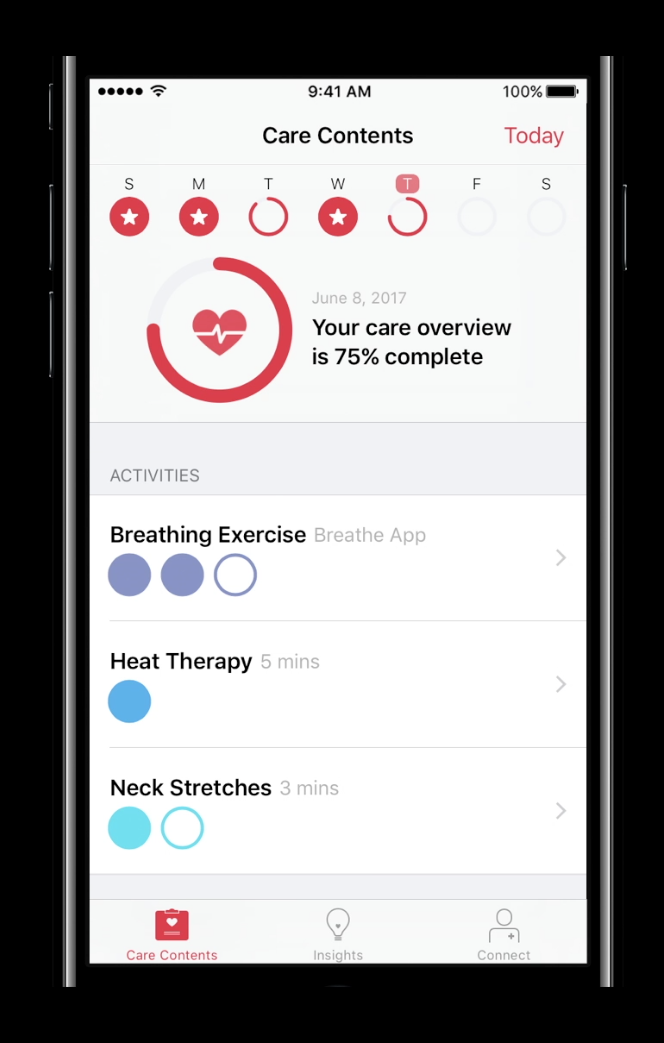 Though health and fitness news on the main stage of Apple’s WWDC focused mostly on Apple Watch updates, the team has also added some significant upgrades to Apple CareKit, which were shared at a series of sessions at the conference that are now available online. Among the revelations: Apple has made it easier to connect CareKit apps to hospital back-ends, has created a prototyping tool to make CareKit more accessible to non-developers, and has improved the CareKit UI.
Though health and fitness news on the main stage of Apple’s WWDC focused mostly on Apple Watch updates, the team has also added some significant upgrades to Apple CareKit, which were shared at a series of sessions at the conference that are now available online. Among the revelations: Apple has made it easier to connect CareKit apps to hospital back-ends, has created a prototyping tool to make CareKit more accessible to non-developers, and has improved the CareKit UI.
“CareKit apps today allow patients to share their data in PDF form via our Share Reports option on the Connect View,” Kelsey Dedoshka, a software engineer at Apple, said in one session. “We found that it was time to upgrade this share experience. After the launch of CareKit, we were excited to hear how valuable the data collected via CareKit apps were, not only to patients but to their care team members. However, providing that data back to care teams is a manual process. And this can make it challenging for care teams to update their patient's care cards remotely and even get a good sense of how they're progressing through their care.”
Apple’s solution is the CareKit Bridge API, which makes it easier for developers to integrate CareKit with platforms like Medable’s Synapse, and, presumably, cloud-based EHRs.
“The Bridge API is an abstract cloud API that conforms to the CareKit schema and enables data syncing without any additional configuration,” Dedoshka said. “It’s designed to allow CareKit apps to seamlessly integrate with backend cloud solutions. And it's built upon our current CareKit data model and architecture. The Bridge API provides all of the necessary hooks for cloud solutions to seamlessly hook into the CareKit framework.”
The company is also moving to address concerns that CareKit has too many barriers to entry, especially for academics and clinicians without app development experience.
“Ever since we announced the CareKit framework, in 2016, we've received a ton of requests from healthcare professionals and people in academia, inquiring about nontechnical resources that can help them better understand the capabilities of the CareKit framework," Srinath Tm, another software engineer, said in a different presentation. "This is when we realized that there seems to be a barrier for entry for our nontechnical audience. Which is why we've come up with a tool that can help simplify this process, by allowing anyone to create a custom prototype CareKit app, without having to write any code, at all.”
The prototyping tool makes it very easy to create a nonfunctional mockup app in order to pitch a project, for instance, or do market research with patients.
Other updates to CareKit include a number of UI improvements and the addition of a new view for patients that combines the information in the Care Card and Symptom Tracker views. A number of ring glyphs take inspiration from the Activity Rings on the Apple Watch to help users keep track of how far along they are in their care plan. Developers can also now include optional activities and read-only activities in CareKit apps.













